Throughout the work of Hiroshi Sugimoto, photos is a type of embalmment, a tactic of preservation, and an instrument of experimentation.
Born in 1948, Japanese artist Sugimoto works with photos, site-specific sculpture and construction. Time Machine on the Museum of Trendy Art work surveys over 5 a few years of his work. The exhibition highlights Sugimoto’s conceptual technique to pictures and his steady investigation of the photographic kind.
Sugimoto’s photos reveal his reverence for technique. They’re primarily in black and white, and typically made with an analogue large-format digicam. These are photos made with intent; fastidiously deliberate, and typically slowly executed.
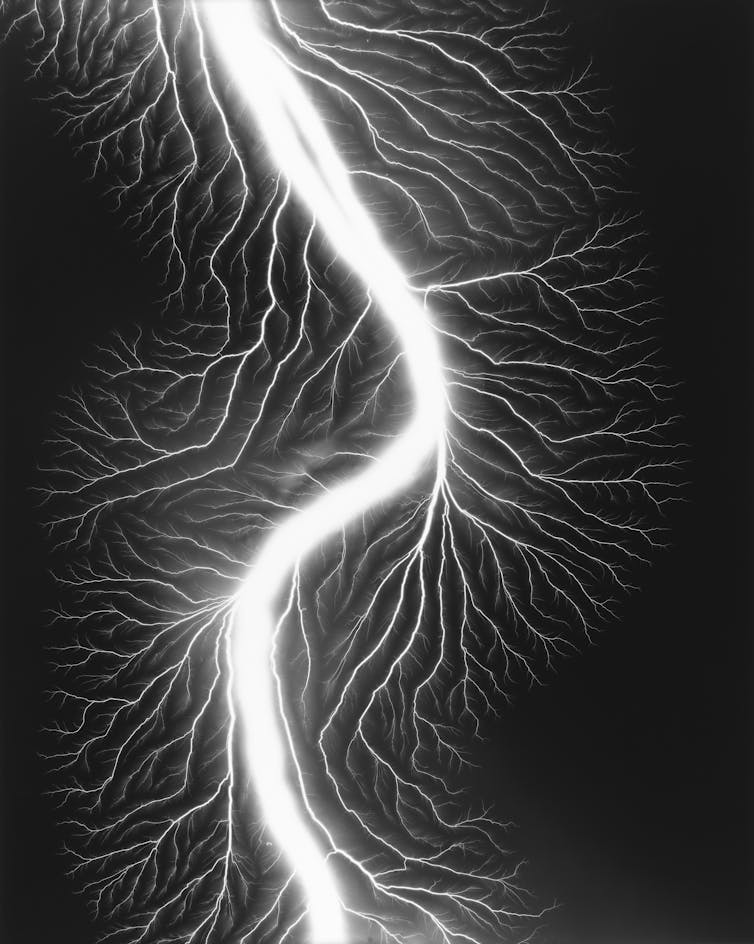
Image courtesy and © Hiroshi Sugimoto
Sugimoto’s work engages with the historic previous of photographic provides and processes. His Lightning Fields (2006–) prints are camera-less photosphotos made by the use of the direct use of sunshine or chemical substances on light-sensitive paper or film.
These photos gesture to William Henry Fox Talbot’s early experiments with static electrical power: Sugimoto’s photos are the outcome {{of electrical}} currents meeting unexposed film. The prints perform dramatic varieties that look like splayed branches, sprawling veins or plant roots: fireworks on paper.
Grandness askew
At first look, plenty of Sugimoto’s photos direct consideration to the legendary and the monumental: they picture Modernist constructionportraits of royals and infamous leaders, and wild animals poised to hunt.
Nonetheless they tilt instead within the route of a lot much less positive territory. By Sugimoto’s use of bokehor blur, the Eiffel Tower in his Construction assortment is out of focus.

Image courtesy and © Hiroshi Sugimoto
The fantastically lit portrait of Princess Diana, arms behind her once more and looking out away from the digicam, is of her wax likeness: a portrait made at Madame Tussauds two years after she died.
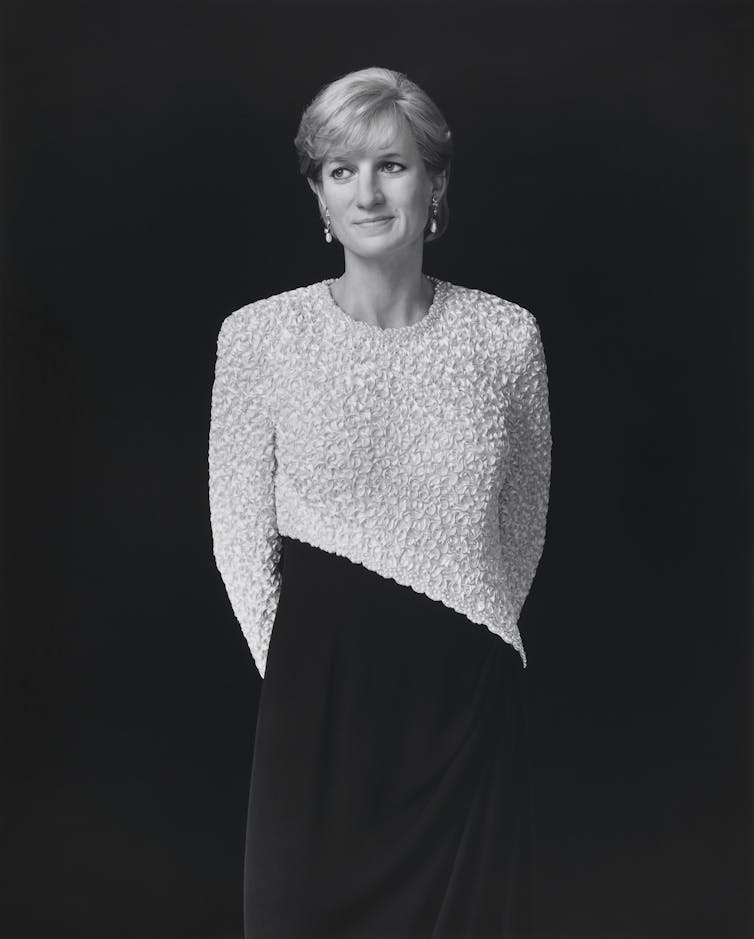
Image courtesy and © Hiroshi Sugimoto
The proud polar bear about to dive on its prey is {{a photograph}} of the enclosed home of a diorama: the animal ceaselessly poised sooner than the meal it will on no account have.
Sugimoto’s lens underscores eminence and sweetness with uncertainty in regards to the look of actuality. His work raises questions on the place existence begins, ends, or transforms.
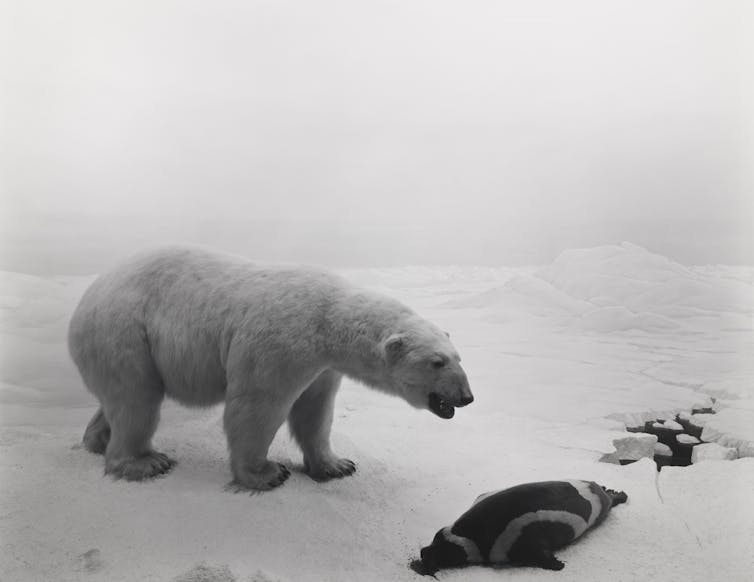
Image courtesy and © Hiroshi Sugimoto
The pores and pores and skin between life and demise, monument and smash, surfaces in plenty of Sugimoto’s photos. Sugimoto’s “time machine” strikes between time gone, frolicked and a means of being previous time.
A tiny room inside the centre of the exhibition – relieved from its conventional perform as a storage cupboard – contains the exhibition’s smallest prints. This tight home, with its industrial lighting and uncovered air-con ducts, is a changing into stage for Sugimoto’s Chamber of Horrors (1994). This assortment choices wax figures of infamous murders and their gadgets of torture and demise.
The claustrophobia inside the photos is replicated inside the tiny home.
Small variations
Sugimoto’s on-going Seascape assortment with their uniform divide between sky and ocean, are quiet black-and-white photos. There are not any swimmers, seabirds or ships at sea proper right here: merely water, sky and lightweight from the moon or photo voltaic. Delicate variations in tone, wave patterns and lightweight reveal themselves with sustained making an attempt.
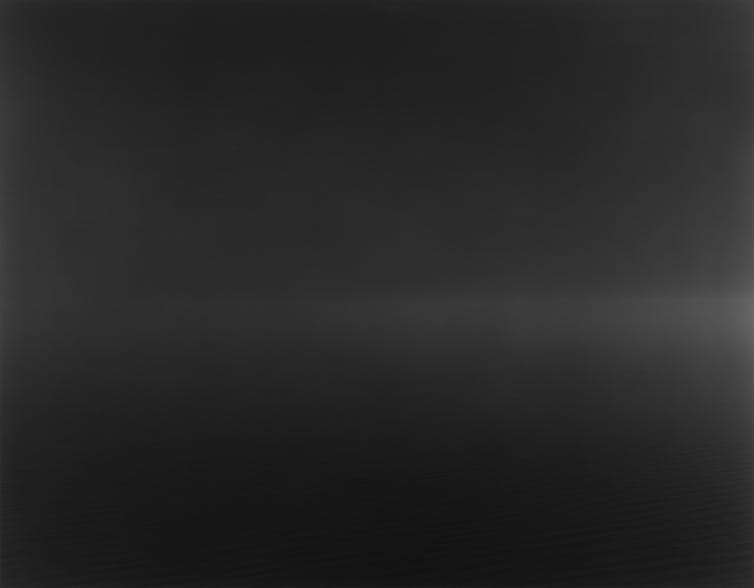
Image courtesy and © Hiroshi Sugimoto
The vantage stage from which Sugimoto photos is never revealed, although each image is titled by geographic location. Ligurian Sea, Framura (1993) is among the many darkest and most nuanced in tone: a nocturnal seascape lit barely by moonlight.
A dimension of wall choices Sea of Buddha (1995). Sea of Buddha is a set made in Sanjūsangen-dō (三三门堂)a Twelfth-century Buddhist temple in Kyoto.
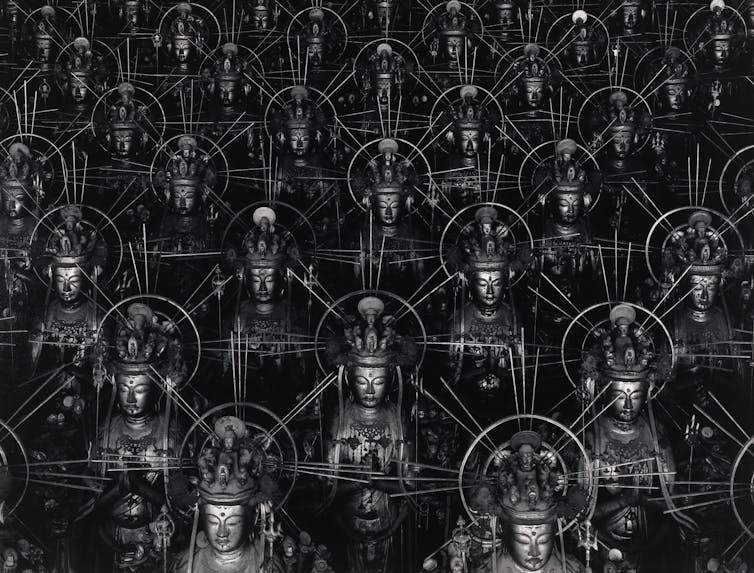
Image courtesy and © Hiroshi Sugimoto
These black and white prints share the refined play of variations in Sugimoto’s Seascapes. Sea of Buddha footage the 1,001 picket sculptures of Buddha gilded with gold, a collective of not-quite related sculptures, small variations revealed by the use of Sugimoto’s lens as delicate catches the shimmer of gold.
Gentle and decay
Sugimoto’s celebrated Theaters (1976–) photos are made by using an publicity time equal to the screening time of a film. Sugimoto opens the digicam shutter as a result of the film begins and closes it solely as quickly because the film has accomplished. The result is a luminous show display framed by the within of a theatre: a single {{photograph}} of a whole film.
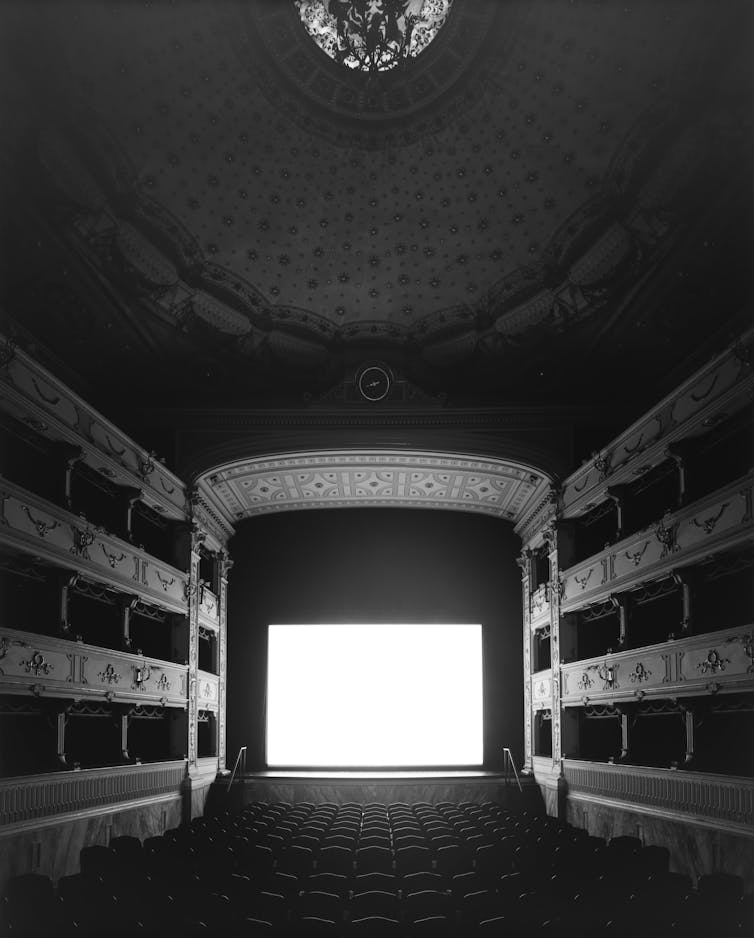
Image courtesy and © Hiroshi Sugimoto
The factor of these interiors is lit solely by the cumulative delicate from the projected film.
Whereas some interiors in these photos retain their genuine ornate décor, Sugimoto’s Abandoned Theatres (2015) doc the areas in numerous states of decay.
These photos of the theatres’ afterlife are displayed in lead frames, allowing the patina of smash to spill previous the enclosed photos as a result of the lead oxidises.
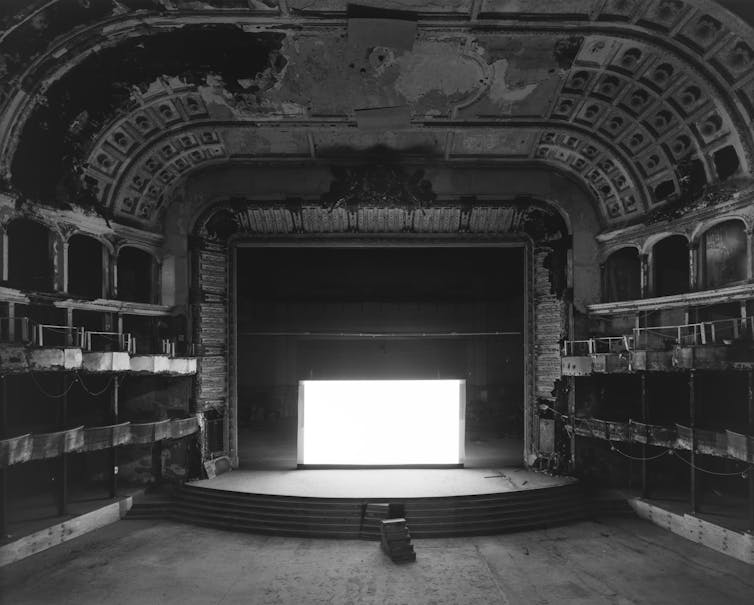
Image courtesy and © Hiroshi Sugimoto
The weathering of the theatre inside in Metropolitan Opera Dwelling, Philadelphia (2015) is lit by the central luminous film show display. The ceiling is falling in, the facet balconies gutted, and a bit of the doorway stage stairs are askew. The decay itself is embalmed, preserved, and reworked by the projected film and Sugimoto’s digicam.
This a part of the gallery areas moreover contains Sugimoto’s Drive-Ins assortment. In these photos, the outside cinema screens, by the use of Sugimoto’s prolonged publicity, delicate up exterior areas.
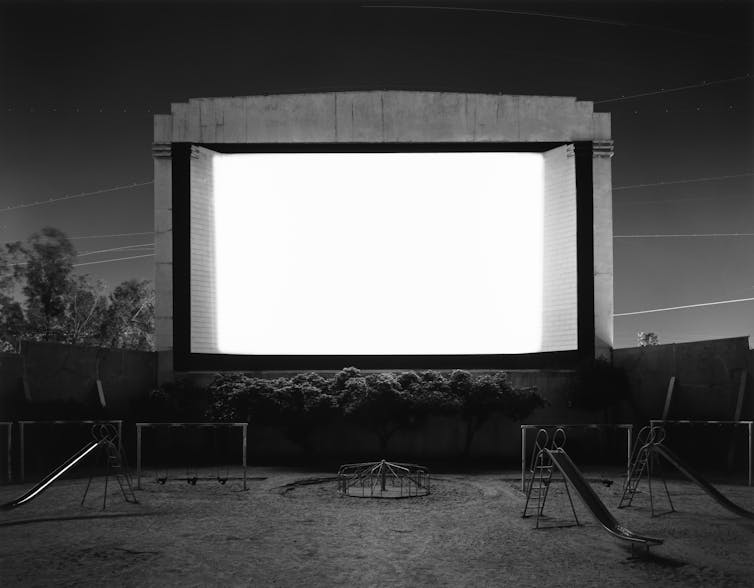
Image courtesy and © Hiroshi Sugimoto
In Tri Metropolis Drive In (1993) the projected film lights the empty playground in entrance of the show display. A set of swings and slides sit unused. The sky behind the show display contains traces of sunshine: the outcomes of stars and planes shifting all through the sky in the middle of the film’s interval.
The sky is but yet one more show display for the play of sunshine to be reworked by the machine of time, Sugimoto reminds us.
Hiroshi Sugimoto: Time Machine is on the Museum of Trendy Art work, Sydney, until October 27.
